C.C. Humphreys - Absolute Sword Player
Saturday, May 03, 2008
 I have been re-reading Alexandre Dumas to satisfy my appetite for swashbuckler novels. Then I discovered Jack Absolute. Former actor, schoolboy fencing champion and author (six novels and three plays) C.C. Humphreys was a few minutes late to my studio. He had decided to drive not walk. He was concerned he might be stopped on the way. He was bringing a cavalry sabre. In 1987 in the opening night of the eighteenth-century comedy, Richard Sheridan's The Rivals in London, actor Humphreys played protagonist Jack Absolute, a young swashbuckler rake. In Humphreys 2003 novel, Jack Absolute , Jack goes to see the The Rivals and learns that Sheridan has stolen his name and made him the star of his comedy. In Humphreys's third in the series, Absolute Honour (2006, the second was the 2004 prequel The Blooding of Jack Absolute ) Humphreys borrows back from Sheridan and incorporates part of the plot of The Rivals. Canadian born, but British educated, Humphreys understands the importance of the Plains of Abraham in the making of Canada. In The Blooding of Jack Absolute Jack is a 16-year-old boy who fights in that battle. During his research Humphreys climbed up that back way to the Quebec City plains in training shoes. "It's not vertical but at 70 degrees it must have been difficult. Every time you place your foot it is treacherous and you slip. What would it have been like in boots, pack and musket? At the top there are two signs. The one in English stated that this was the path the British Light Infantry came up at two in the morning. The one in French hints that Wolfe snuck up and with superior naval power won the day. Which is bonks! The navy was not involved." Humphreys the actor became obsessed with Absolute to create the protagonist of his novels. He also has played Hamlet enough times to find an equal attraction to the role. Of Hamlet he said to me, "It is the ultimate straight role. Whatever stuff you bring from your life, that's who Hamlet is on stage. It is a personal journey. It exposes a lot of your own things and stuff." In the Blooding of Jack Absolute Jack winters in a cave with a Mohawk called Até. He teaches him to read with the only book in hand, a cheap copy of Shakespeare's tragedy. With lots of twists and turns, spies and sword fights(complex ones involving left handers), Humphreys satisfies my hunger for reading adventure. Now as a late Canadian citizen, I understand how the battle that made Canada was fought. I asked Humphreys what role a swachbuckler plays in the 21st century. "It is as ever it was. It is to give an example of someone who is engages in the pursuit of honour, justice and is prepared to risk all at the point of a sword to gain everything." 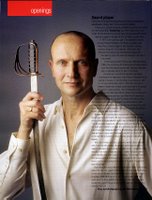 Humphreys has also published the novel The French Executioner (about the man who lopped off Anne Boleyn's head). For those who cannot wait for the next Jack Absolute they will have to wait longer. In October 2008 McArthur & Co. will be publishing Humphrey's novel about the true historical Dracula, Vlad: The Last Confession. Humphreys lives in Vancouver whith his wife and son. His website is: cchumphreys.com © 2008 VLM/Alex Waterhouse-Hayward
Tuesdays With Morrie - The More Than Human Jazz Pianist
Friday, May 02, 2008
Rosemary and I attended last night the opening performance of Mitch Albom and Jeffrey Hatcher's play Tuesdays with Morrie. It was an Arts Club Theatre Production on the Granville Island Stage. It was an exquisitely excruciating experience.
It was that much more excruciating for me because I had the pleasure of taking Antony Holland's (he plays Morrie to Warren Kimmel's Mitch) portrait, left, last Thursday. Holland was 88 on March 28th. When he faced my camera it was obvious that here was a man who is in full control of all of his faculties including a keen sense of humour and a phenomenal memory. The only flaw I could detect was an extraordinary sweet tooth. He is much younger than his 88 years.
To see Holland's character Morrie (who is suffering the terminally degenerative Lou Gehrig's disease) break down on stage and slowly descend from dancing, to using a walker, to sitting in a wheel chair, to having to use a reclining sofa and then further degenerating into the pallid emaciated old man who is bedridden was a tour the force for me.
This tour de force was equaled by Warren Kimmel's performance as an ambitious, cold, calculating sports writer who somehow by the end of the play breaks down (pushed by his mentor Morrie) and becomes a whole human being. He was so despicable that I even noticed his loathsome light brown Italian shoes. Had I met him on the street with him wearing those shoes I would have instantly disliked him. Such is the power of good acting.
Such is the power of good acting that the play brought to mind a favourite science fiction novel that I had read in the 60s called More Than Human by Theodore Sturgeon. Somehow as Mitch broke down mentally while his mentor Morrie broke down physically that combination added to "more than human" and gave this depressing play (I laughed lots in the first act) a cathartic saving grace.
Curiously a play with such complexity of feelings had friend and VLM editor Bob Mercer and I wondering if Warren Kimmel was really playing that wonderful jazz piano. Mercer who probably told both his younger brothers that Santa Claus did not exist thought the piano playing was a recording. I was convinced that Kimmel's considerable acting abilities included playing a damn good jazz piano. So we asked an usher who told us, "I really was not here during the first 15 minutes (a patent lie) so I don't know. Kimmel is talented so he certainly could have been playing it." I was not satisfied so while waiting back stage to talk to Holland I asked the stage manager who answered, "I really cannot tell you as I have not noticed if he plays the piano. It is possible."
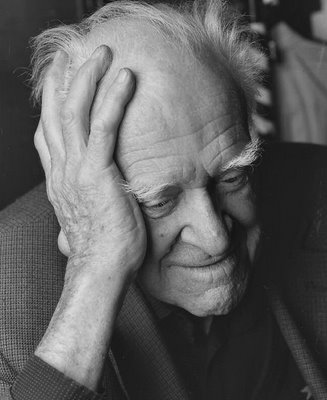
So I warned Holland how the two previous persons had been ambiguous in answering my question. I asked, "Does Kimmel really play that piano?" Holland looked at me directly (and in character, or was it out of character? I could not make up my mind.) and he told me.
Emily Molnar, Crystal Pite - Eisteinian Space & Time
Thursday, May 01, 2008
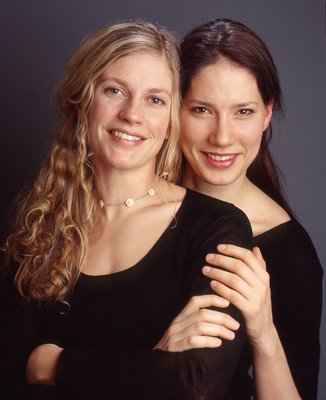 It has taken 65 years for my concept of space and time to change, even after having read here and there about Einsteinian time and space. It all suddenly changed for me some five years ago when Vancouver contemporary dancers Emily Molnar and Crystal Pite discussed space, time and movement in my studio. The shortest definition of relativistic movement I have ever heard came from Molnar (35) who said, “Movement is the observer.” This means that from a position of rest we the observers can discern the movement of a dancer on stage. Of time Pite (37) said, “The ephemeral of dance exists only in the present movement. We are left with traces of movements that are gone as they are being created. As we carve space with our bodies they leave a ghost, the trail which affects our future moves and informs the observer of our past moves.” I then understood that those past moves are much like the contrails that high-flying jets leave in the sky. In 1996 I photographed Crystal Pite who was leaving Ballet BC for William Forsythe’s Frankfurt Ballet. I had seen her Ballet BC farewell performance of her own work, Moving Day. I was amazed by her elegance and style but immediately saddened that I might not to see her dance again. In 1998 I photographed Emily Molnar who returned from the Frankfurt Ballet to assist John Alleyne’s direction of Ballet BC. Fortunately for us all Alleyne made her dance, too. In between, Pite and Molnar met and danced for two years in Frankfurt. Pite returned to Vancouver 6 years ago where she directs Kidd Pivot, her own dance company. Rebecca, my precocious 10 year-old granddaughter with whom I attend as many ballet and modern dance performances as we can, may be well ahead of her lumbering grandfather. She has declared to me that her favourite Vancouver dancers are Crystal and Emily. We agree. It was with Rebecca that I saw Pite do part of her full-length ballet for the Frankfurt Ballet called Field Fiction. On stage, assisted by the excellent Cori Caulfield, and dressed in a stylized military uniform she removed her Prussian type spiked helmet and inserted her head into a noose that hung from the ceiling. On her tiptoes she did an exquisite and alternately horrific interpretation of a man hanging. I can only imagine what the scope of the silence that followed this performance must have been when it premiered in Frankfurt. Behind me was Sylvain Senez, Ballet BC’s Ballet master whispered in my ear, “Crystal is the future of dance in Vancouver.” When Molnar (she is striking at 5 ft 11in) entered my studio for her first picture in 1998 she quietly sat in a corner in a fetal position for 10 minutes before facing my camera. Since then, thanks to Molnar, Pite and the performances of some of William Forsythe’s works by Ballet BC I have come not only to appreciate why Forsythe’s choreography and his company were rated about best in the world but also why Molnar and Pite talk physics. Asked on how he pushes the boundaries of the form of dance Forsythe once said, “I don’t think so much of the body when we are doing this. We are thinking about ‘the thinking body’ or we’re trying to understand how the body thinks about its own presence.” Or the way the ever-succinct Molnar put it to me, “Dance requires the entire body and the mind.” Molnar has her own company, Emily Molnar Dance. When possible I attend whatever performance of hers I can find. More often than not she is busy choreographing for companies in Europe and New York. I sometimes catch her rehearsing the senior dancers at Arts Umbrella on Saturdays. Her principal role performances for several of John Alleyne’s full-length works including The Faerie Queen and Scheherazade linger in my memory. On the rehearsal of the latter Rebecca first noticed her and insisted on meeting her. It was in Molnar’s solo performance of Speak choreographed for her by Margie Gillis that I finally fell hard for her. I had to photograph Molnar for a local publication and she offered to go through the whole performance (just for me!) so I could pick a dance move for the photograph. In such close proximity I learned how strenuous dance really is no matter how effortless a dancer makes it seem to be. I now sit in the front row for dance performances, as part of the rewards of watching dance is to be able to hear the dancers breathe. In retrospect when I think of Molnar and Speak and watching her long limbs I smile remembering what Pite says of her, “There is always this extreme quality of her movement. The extreme doesn’t come from her extremities, although the result is extreme. The extremity is internally motivated. The motivation comes from her core.” For me watching Pite or Molnar dance (they have yet to dance together in Vancouver) puts other dancers with them at a disadvantage. Pite and Molnar stand out and the others just fade much in the same way as the Royal Winnipeg Ballet’s dancers used to disappear for me when I watched Evelyn Hart dance. The uniqueness of Pite’s and Molnar’s style is perhaps best explained by Molnar’s take on Pite. "She is an artist of the highest caliber. She is defining dance in the future. She has a movement understanding that is absolutely three-dimensional. You know it’s Crystal when she dances, whether you see her face or not. There is uniqueness, creativity and a sense of humour in her statements. There is a grounded articulation in her physicality. There is no one like Crystal, and what that is, is still evolving." While Crystal’s definition of Molnar involves lots of physics I can safely say that Sylvain Senez was only half right. The future of dance in Vancouver is not only Crystal Pite but Emily Molnar, too. It is a special delight when either Molnar or Pite appear in one of my favourite Vancouver dance programs, Dances for a Small Stage . The restraints of a small stage are a problem when you consider that both Pite and Molnar agree that when you, for example, throw an arm out, the distance cast is infinite. For a while, I selfishly hope, that their movements do not exceed beyond the borders of our fair and doubly lucky Vancouver.
Wednesday, April 30, 2008
I wrote about Rhododendron augustinii last year here. Again there is no doubt that this rhododendron is not blue but somehow when I photograph it is bluer. The flowers reflect ultra violet light and register more blue on colour film. The results with a digital camera would be the same as the camera sensors are also far more sensitive to ultra violet that we are.  There have been some other changes that I have been able to note here. In spite of people who think that plants are affected (emerge sooner or later, flower sooner or later) by weather it would seem this is not the case, at least not with this rhododendron that is performing on schedule. I posted the blog last year on May 15 but I am sure I took the picture of Rebecca more or less at the end of April. The new ones here of Rebecca and Lauren I took last Saturday, April 26.  The changes in question have to do with the two little girls. It would have been impossible to convince Lauren to have posed for me by the rhododendron in April 2007. This time around she insisted on being photographed. Last year and years before Lauren would blink as soon as she faced a camera. She is also extra sensitive to light and squints. The light last Saturday was overcast yet Lauren could not look up that much. But I was able to get many of pictures that capture an age (she is 5) when most little girls are bubly and happy. Her mother might even say, after she sees this picture of Lauren that she has come to her own. I would agree. Lauren is very sweet and a delight. A year ago she was not. She was a bit slow in learning how to talk. She has been slow at many other things. But she seems to have a formula which is to not do anything until she can do it well. She is like Greta Garbo. Unlike Rebecca who seemed to learn stuff gradually, she will talk and walk suddenly.  For some years I have been taking remarkable portraits of Rebecca not because I may have any special talent but because Rebecca has that face and she knows how to project it on to a camera. In last year's photograph by the rhododendron I can see an uncertainty, a sadness that I have not seen in other photographs.  In the photograph of Rebecca (right) I see an ackwardness with her body. And I think I know why. It is a little girl who is 10 but going on 15. It is an age of confusion. Meanwhile Lauren will pose for me knowing who she is in a perfect harmony with a life that does not have the complication of having to grow up, yet.
Tuesday, April 29, 2008
The warning message arrived on Monday, the bomb itself on Wednesday. It became a busy week.The Care of Time, 1981, Eric Ambler 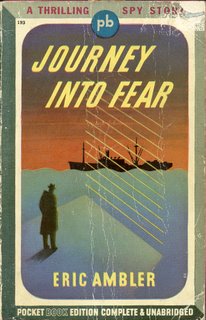 Last Tuesday I went to Focal Point to teach my perennial class The Contemporary Portrait Nude. I decided to take the B-Line bus which drops me off half a block from the school on 10th Avenue. The stop is right by a used books store. I always look in the window. I immediately noticed the Eric Ambler novel (sometimes called political thrillers), The Care of Time. I knew I was going to buy it for two reasons. I read any book by the English author who died in 1998 because he was my mother's favourite thriller writer. I may have been 15 when she handed me a copy of his A Coffin For Dimitrios. I re read it every few years it is that good. It begins: A Frenchman named Chamfort, who should have known better, once said that chance was a nickname for Providence.  A Coffin for Dimitrios paved the way for my later appreciation of Ian Fleming, Len Deighton, John Le Carré and Graham Greene (in particular The Confidential Agent). The second and most important reason is that here was a novel by Ambler that I had not read. I opened the book and read the first incredible paragraph (above). I paid $4 for a first edition which is in reasonable shape. The photograph (seen here) of the author by photographer Stephen Cornwell graces the back cover. 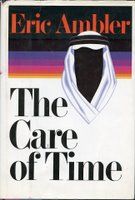 This novel, about a ghost writer who has a good reason to dislike both the CIA and the Iraquis, has a relevance today. Consider the second paragraph: The message came in an ordinary business envelope that had been mailed from New York but had no return address on it. Inside, folded in three, was one of those outsize picture postcards that are offered to tourists in some places nowadays. This one was of a hotel with palm trees and carried an ornate caption proclaiming that it was the Hotel Mansour, Baghdad, Republic of Iraq. Yesterday afternoon I visited my friend, photographer Raymond Lum. As a graduate from LA's Art Center he is very much like all the other graduates of Art Center that I have met. This means that Ray is most concerned with accuracy and perfection. With the advent of digital photography the pictures on his monitor have no hint of colours that were not in the original scene that he saw before he photographed it. His portraits have neutral gray backgrounds, blue shirts are blue with no hint of purple and skin tones are real enough to almost be uncanny. Ray made an uncharacteristic mistake when he told me, "The difference between shooting RAW and a jpg (two different methods of storing the information of a digital photograph) is that RAW images have richer colour." As I admired Ray's realistic portrait of a real estate agent (Plato might have called it an essence of the real estate agent) I answered back, "Ray, I like your portrait because it is accurate. I am not interested in richer colour. I am interested in accuracy." One of the reasons Ray gets this accuracy is that he does not depend on a DSLR (digital single lens reflex) but has a scanning back attached to his Hasselblad. The pristine image of the real estate agent is a whopping 20 megabytes. Looking at Ray's accurate portraits (he spends a considerable amount of money and much effort in making sure his top-of-the-line LED monitor is calibrated to his specifications at least once a month. Any picture that you see on his screen and one that he prints on his inkjet printer are virtually identical), I thought of the Acoustic Research ads of the early 60s that advertised a unique approach to sound. AR conducted a series of over 75 live vs. recorded demonstrations throughout the U.S. in which the sound of a live string quartet (The Fine Arts Quartet) was alternated with echo-free recorded music played through a pair of AR-3s. In this “ultimate” subjective test of audio quality, the listeners were largely unable to detect the switchovers from live to recorded, a strong testament to Acoustic Research audio quality. This was in an era before we began to boost bass, zing the higher frequencies and surround ourselves with sound or hear it inside our head from a little machine in our front pocket. A sense of loss in the original quality of sound has many an iPod owner docking the device into a tube amplifier that is supposed to uncompress the sound and return the original presence taken out during compression. By the 80s, sound enhancement concepts had wandered off into the realm of photography. Film was made with punchy colours and increased contrast. There was slide film that gave people an artificial sun tan. It was advertised as having a warmer and rich colour. I had an admiration for the colour carbro process nude prints by Paul Outerbridge taken in the late 30s and 40s. Skin looked real. Instead of this accuracy we were fed high contrast and gloss by Cybachrome technology. From his first 1936 novel The Dark Frontier to his 1991 Waiting for Orders Ambler wrote cool thrillers in which most of his protagonists were ordinary (in some cases colourless) people who more often than not accidentally got involved in situations that were completely beyond their control. One such man is Charles Latimer a lecturer in political economy who writes his first detective novel at age 35, called A Bloody Shovel. Latimer is the main protagonist of A Coffin for Dimitrios whose life changes when he meets (in Istanbul, naturally!) one of the most interesting and complex characters in thriller writing, Colonel Haki. The suave Colonel tells Latimer: "I get all the latest romans policiers sent to me from Paris," he went on. "I read nothing but romans policiers. I would like you to see my collection. Especially I like the English and American ones. Al the best of them are translated into French. French writers themselves, I do not find sympathetic. French culture is not such as can produce a roman policier of the first order. I have just added your Une Pelle Ensanglantée to my library. Formidable! But I cannot quite understand the significance of the title." Latimer spent some time trying to explain in French the meaning of "to call a spade a bloody shovel" and to translate the play on words which had given (to those readers with suitable minds) the essential clue to the murderer's identity in the very title. Much has been written on the excellence and richness of Patrick O'Brian's nautical novels. I, too have found them excellent and I have read the series twice. But this does not mean that I will forgo the enjoyment of C.S. Forrester's Hornblower novels. I find a telling connection between Forrester's Hornblower and Ambler's everyday men who rise to become heroes. I see a further link between Acoustic Research's (and Angel Records) penchant for accuracy and Raymond Lum's near obsession with the accuracy and neutrality of colour in his photographs. It is almost impossible to understand what is in Hornblower's mind at any time because Forrester choses not to tell us. He does not colour or enrich the man with deep thought. It is there, but between the lines. The reader has to extract it. It is for this reason that Gregory Peck's performance as Hornblower is so perfect. We have to imagine everything in a glance or a pressing of lips. Ambler's description of Colonel Haki seems to be matter of fact but beneath it all is a man who is complex and scary. And much the scarier as we weigh him in our imagination. I tell my students at Focal Point that unlike film photographers (as this one) they now have the power to record and display the colour and subtlety of human skin with a near perfection that was never there until now. So few of them take advantage or understand the gift they have. Thankfully there are a few out there (Raymond Lum is one of them) who like Ambler, Forrester, and my Acoustic Research amplifier provide me with the richness (pardon me!) and the enjoyment of that which is plain and accurate. The man standing in the shadow of the doorway turned up the collar of his overcoat and stamped his numb feet gently on the damp stones.First paragraph, Cause For Alarm, 1945, Eric Ambler
Román Lopez Forment - Dusenbergs - Moritz Moszkowsky & Wee Willie Winkie
Monday, April 28, 2008
‘You’re a hero, Winkie,’ said Coppy—‘a pukka hero!’ ‘I don’t know what vat means,’ said Wee Willie Winkie, ‘but you mustn’t call me Winkie any no more. I’m Percival Will’am Will’ams.’ And in this manner did Wee Willie Winkie enter into his manhood. Wee Willy Winkie - And Officer and a Gentleman Rudyard Kipling 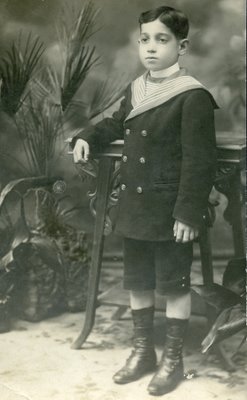 In the late 50s and early 60s Román Lopez Forment was a weekly guest for dinner at our home ( I lived with my mother and grandmother in Mexico City). Román's mother, Josefina, was my grandmother's sister. She had been widowed in the Philippines so she moved to California with her daughter and five sons. It was there that her sons were adopted by a mafia don. Román, who as a young boy had had unruly curly hair that made him resemble a Polish pianist and composer, Moritz Moszkowsky was given the nickname Moszkowsky and was a favourite of my grandmother. He quickly became one of my favourite uncles because of his stories of life in California in the 1930s. He and his brothers had money (the mafia don?) so they drove Dusenbergs, Auburns and owned yachts. They wore white slacks, played tennis and did not work much. There were many women. Román scandalized his family by marrying his manicurist who was a Mexican born German. Bertha and Román moved to Mexico. I was never smart or curious enough to find out what happened at the end of prohibition if that is were the Forments lost their regal family fortune. Bertha and Roman had two daughters and three sons and lived in the working class neighbourhood of Tacubaya. It was in Tacubaya where in the American British Cawdry Hospital both my daughters, Ale and Hilary were born. I remember vividly visiting them one day. A relative of Bertha's had appeared driving a Taunus. Bertha proudly told me that it was a German Ford. When I was 14 Román's brother Vincent sent his son Bryan to stay with us. Bryan developed a terrible toothache. My mother sent him to the dentist. It was a terrible abcessed tooth which the dentist removed. We never heard the end of it as Bryan's father was a Christian Scientist. He told my mother that we should have obtained his permission if Bryan was to see a doctor. I remember this all very well because it was during those days that I had gone to see Grace Kelly's (the love of my life at that moment) last film, The Swan with Lois Jourdan and Alec Guiness (who played the prince who in the film accomplishes what Prince Rainier did in real life, take Kelly away from us!). I had gorged myself on a huge bag of pistachios and was so sick I did not eat a pistachio until last year. Bryan laughed when I mentioned that I loved Grace Kelly's neck. Bryan was more sexually precocious than I was and he suspected (rightly) that I did not know the meaning of the verb form, to neck. Years later in 1967 I visited Vincent (my uncle Vincent who lived in Milbrae, California. Bryan was in college. Of the visit I remember nothing but I do remember visiting Vincent's brother Ralph who lived and lives in Stockton. He invited me for a barbecue in his backyard. As he was pouring soy sauce on the meat ( I had never experienced the custom of putting anything on cooking meet except salt, after all I am Argentine) I was astounded to see an ocenan liner parade past on the other side of my Uncle Roman's hedge. While I had recently attended a performance of Jefferson Airplane and I had marvelled, during the performance, at the sight of a pretty young girl in a corner staring at the greenness of her tiny glass of Crème de Menthe for what seemed hours, I could not believe my eyes. It was then that Uncle Ralph explained that Stockton was a sea port because of the ship channel and that the channel in question was in his back yard. It is only now that I am 65 that I am curious enough to want to know who the mafia don was. Where did the money come from? Where did it go to? I had my chance a couple of years ago when cousin Bryan Forment and wife (out of the blue) visited me from San Francisco. He explained how his grandfather had had constant visitors who would kneel in the presence of his grandfather. I never asked. Bryan died last year. His daughter Page and her husband Charlie Berghoffer (they live in Redmond, Washington) visited today. They don't know the story. I wonder if I will ever know.  Page and Charlie asked me if I was going to add (handwritten by my mother) to my mother's fold out family tree where I showed them how I was related to the Forments. Looking at their young and enthusiastic faces I probably brought them down by telling them that nobody in a few years would care and our decendants would then create their new family trees and we would be in a distant but forgotten past. I was lucky enough to have an Uncle Román who visited and filled my head with wonderful stories. Could such wonderful stories entertain Rebecca? Can stories be stories if they have no special effects? I suspect it is yes. Lauren and Rebecca had a sleepover with us last night. I had to pick a movie we could all watch. I went to Videomatica with the idea of selecting the 1971 version of Kidnapped with Michael Caine. But I returned with John Ford's splendid Wee Willie Winkie with Shirley Temple, Victor McLaglen and C Aubrey Smith. But it was Cesar Romero's Khoda Khan, the rebellious revolutionary from Northern India that made Rebecca remark, "He is very good looking." This he was and we all (including Lauren) enjoyed a film in which Kipling's original protagonist Percival William Williams somehow becomes an extremely cute Priscilla Williams (Shirley Temple). Kidnapped may have to wait as more Shirley Temple will perhaps be in order.
Lurid Rhododendrons & Watermelon
Sunday, April 27, 2008
 Yesterday I wrote about the epimedium and how I call it the Cinderalla of the garden. It's not there until you notice it. A plant, that is quite the opposite, owu with a flower that screams at you is the rhododendron. There are over 1000 species in this genus. There is an incredible variety ranging from whites and pale pinks and off whites to the most lurid oranges, reds, shocking pinks and purples. It is unfortunate that in Vancouver during the 50 and the 60s the most popular rhododendrons were plants that were bred for colour without any consideration of scent (there are some sweetly scented rhododendrons). These hybrids are pretty well indistructible, mostly disease free and faithfully bloom just about now. There are several in my garden and when we bought our house back in 1986 we could have gotten rid of them. I simply can never get rid of a plant unless it dies. And now when I have come to find them unsightly it is much too late. If I take them out it would take years for species rhododendrons to bulk up to size. Rosemary and I will have to ignore the "loud" screams from these plants. Rebecca appreciates and loves rhododendrons. I have taught her to pass her fingers under the plants in the rhododendron walk in VanDusen. Many have an underside hairy substance under the leaves called indumentum. The colour can be white, pale white and many times a rich cinnamon brown. This indumentum can be very soft and it feels like the inside of a cat's ear. In our garden we do have Rhododendron luteum formerly Azalea luteum until botanists upgraded them to rhodos. Rebecca knows that when this rhododendrum blooms in about two weeks the yellow flowers will be extremely scented and when they beging to decay they paradoxically smell more strongly and more sweetly. The mature hybrid rhododendrons in our garden are here to stay. Perhaps I respect the taste of Mrs Young who lived in our house for many years. Perhaps there were few species rhododendrons being sold and she only bought was was in the market. Rebecca and I will simply have to visit that other garden of ours, VanDusen Botanical Garden and enjoy all those hairy leaves and sweet scents. They are our plants, too. 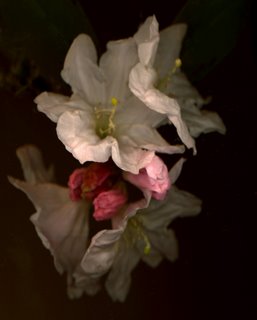 And when Rebecca and I want to smell Rhododendron decorum whose white flowers smell like ripe watermelon we can always visit our friend, gardener Pamela Frost who has a couple in her garden which she planted from seed. As the buds open they go through many colours before they finally become white.
|






















